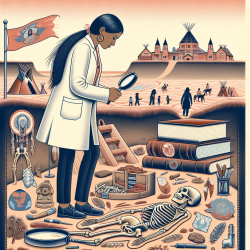Introduction
The complexity and challenges of conducting medicolegal death investigations (MDIs) on tribal lands have been brought to light by the recent research article titled "Medicolegal Death Investigations on Tribal Lands—Underrepresented or Underserved?" This study underscores the critical need for improved infrastructure, resources, and protocols in handling death investigations involving American Indian and Alaska Native (AIAN) populations.
Key Findings and Implications
The research reveals that approximately 150 Medical Examiner and Coroner (MEC) offices serve tribal lands, yet many do not track cases separately, leading to underrepresentation in national data. The median number of unidentified human remains cases from these offices is six times higher than those not serving tribal lands. This discrepancy highlights a significant gap in understanding and addressing the unique challenges faced by these communities.
Moreover, the study points out that MEC offices serving tribal lands often have similar resources to those that do not, despite the higher caseloads and complexities involved. This calls for a reevaluation of resource allocation and support systems to ensure equitable service delivery.
Improving Practices and Encouraging Further Research
For practitioners in the field, the study offers several insights and recommendations:
- Enhance Data Collection: Implement standardized protocols for tracking and reporting cases from tribal lands. This will improve data accuracy and help identify trends and needs specific to AIAN communities.
- Increase Resource Allocation: Advocate for increased funding and resources for MEC offices serving tribal lands to address the higher incidence of unidentified remains and violent deaths.
- Foster Collaboration: Build partnerships with tribal authorities, law enforcement, and community organizations to improve communication and cooperation in death investigations.
- Promote Training and Education: Encourage ongoing training for MEC staff on cultural sensitivity and the specific legal and social contexts of tribal lands.
Additionally, the study highlights the need for further research into the barriers and facilitators of effective MDIs on tribal lands. Practitioners are encouraged to explore these areas to develop more comprehensive and culturally competent approaches.
Conclusion
The findings of this research underscore the importance of addressing the unique challenges faced by MEC offices serving tribal lands. By implementing the study's recommendations and encouraging further research, practitioners can contribute to more equitable and effective death investigations, ultimately improving public health and safety outcomes for AIAN communities.
To read the original research paper, please follow this link: Medicolegal death investigations on tribal lands—underrepresented or underserved?










